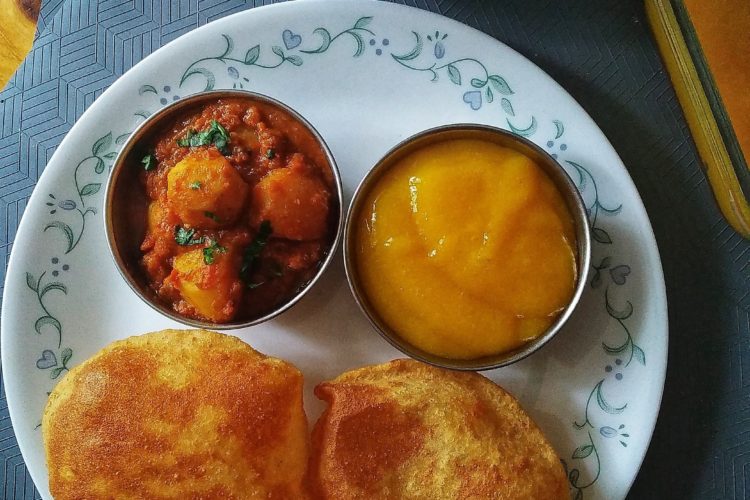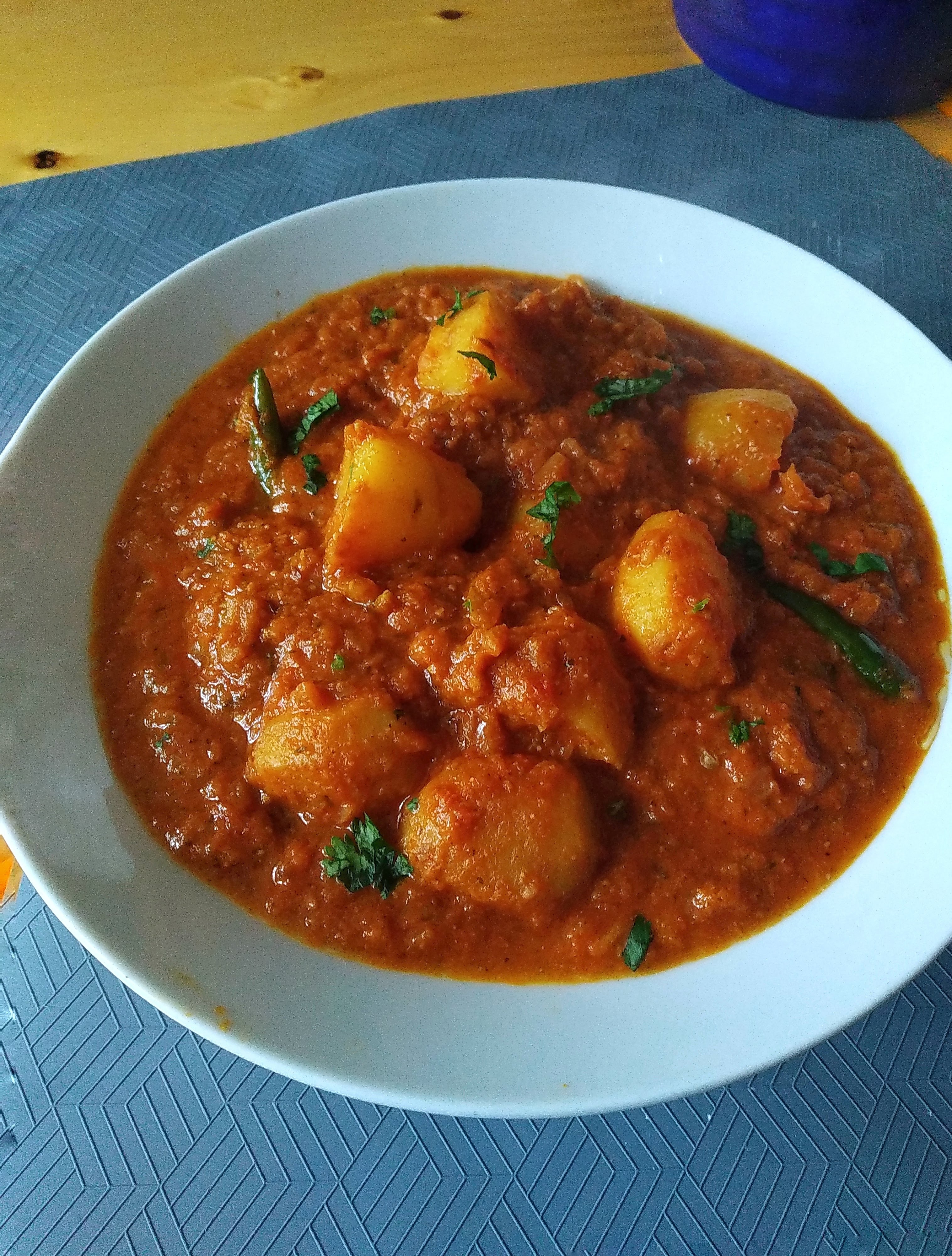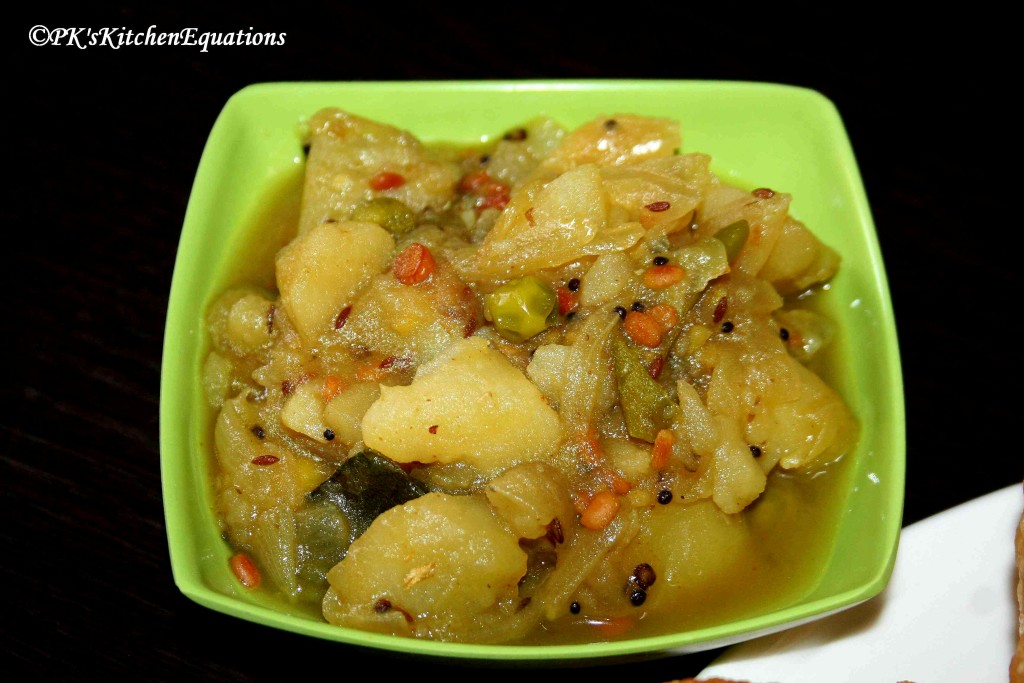aloo puri – who doesn’t like this combo, right? It’s a popular combo of poori with aloo(potato) curry(sabji). In today’s recipe, I share how to make the perfect soft & puffy puri. Eat it with 2 unique tasty potato curries – each from different parts of India. Make these recipes at home and feel free to share your recipe pictures with me – Instagram, Pinterest or Facebook page.
how to make perfect poori every single time?
Poori is fried flatbread of India. It’s usually made with whole wheat flour(though some like to make it with all purpose flour). I always make puri with 100% whole wheat flour(fun fact: I always use aashirvaad atta with multigrains as I am pre-diabetic). Poori dough is slightly different from chapati or roti dough. For chapati, I prepare dough without any salt or oil. Whereas, for puri, I make dough with oil, salt & sometimes with some Indian spices too(masala poori).
To get the perfectly puffed poori, always prepare the dough just before you are ready to fry them. Never rest the poori dough, that way it will soak a lot of oil. Make sure you check my tips & tricks at the end of this post. If you follow my steps, your poori will turn out perfect every single time!
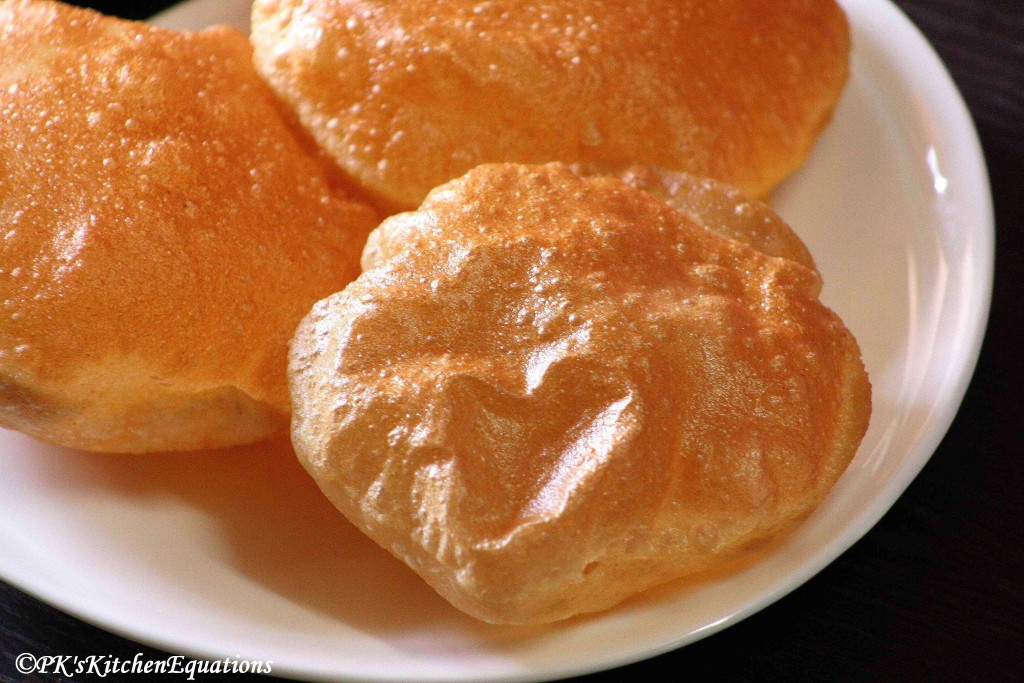
what’s your favorite sabzi with puri?
Each of us have a favorite go-to curry with poori. What’s yours? Well, I actually have 2 of them – south Indian style aloo onion sabzi & the very popular north Indian dum aloo. I make either of them which largely depends on my mood and what are we craving for on that day. Truth be told, being a south Indian, I grew up eating a lot of the south Indian version of poori bhaji. Its made with lots of onions, turmeric and of course, potatoes. Every Udupi style tiffin center serves this kind of potato bhaji with nicely fried, soft & stretchy poori. Wow, I am salivating already! I used to love those tiffins. These udupi poori used to be special at home.
As a blogger, I try lots of recipes and thats how I started preparing dum aloo. This recipe is slightly spicier than the south Indian version and has more deeper flavors and strong spices in it. I make these 2 curries in very different ways. These are definitely not the authentic versions, but, I guarantee that these are delicious & yum!
In today’s recipe, I have shared the perfect meal combo that has – poori, aloo bhaji & aamras. Aamras is Indian style side dish with mango pulp & sugar. It’s a beautiful side dish with poori. If you never tried this combination before, you SHOULD, today!!!
aloo puri meal combo – thali plate
I made this beautiful poori plate a while ago, probably on our wedding anniversary in March this year. I did not share it for a while because I wanted to share my dum aloo recipe first with you all. This beautiful & equally tasty aloo puri combo has all my favorite side dishes. It’s very satisfying to eat this meal and you can make this a special lunch or dinner.
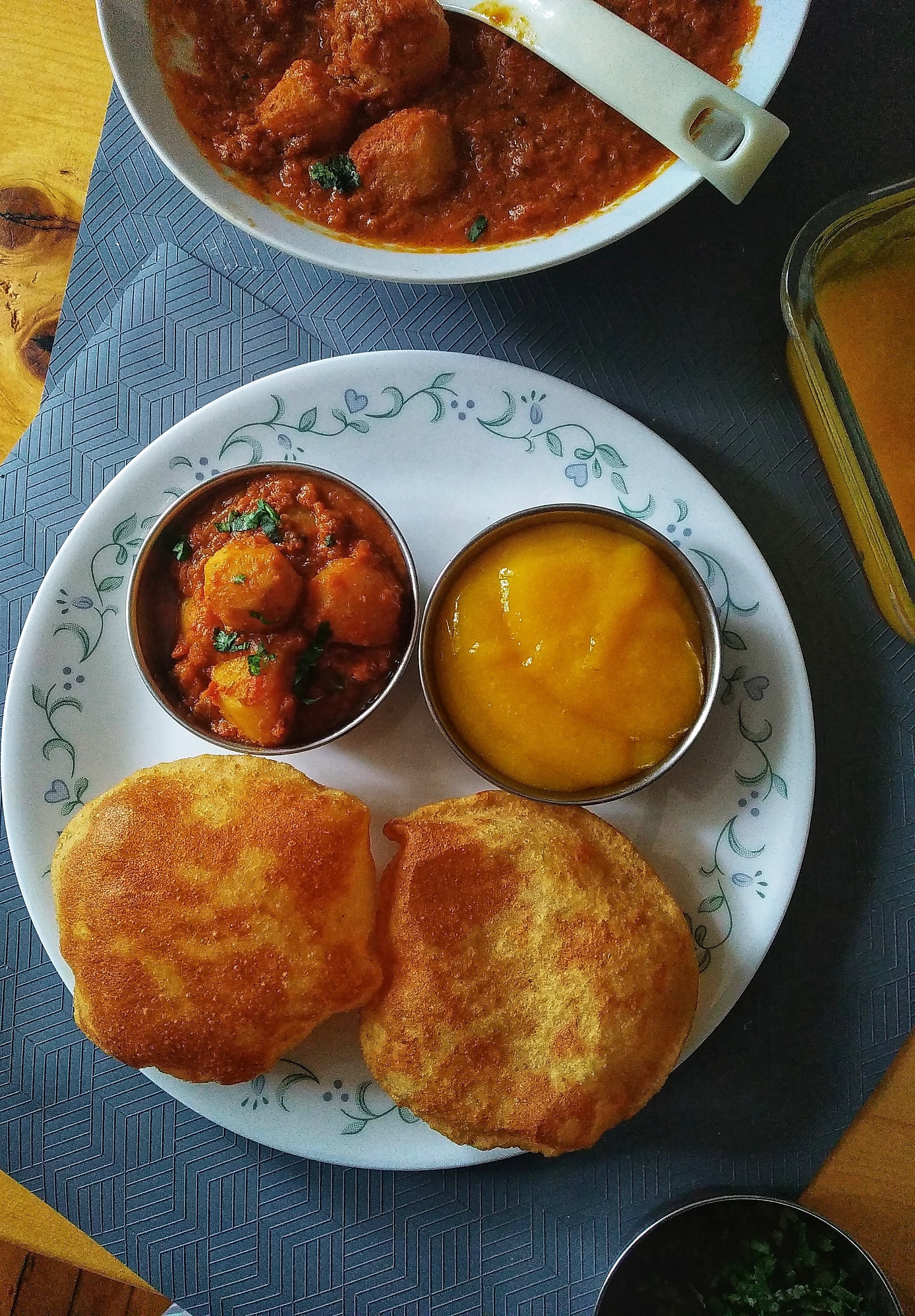
The recipe links for all the recipes on this plate are below:
Also, I make poori as per the curry that I make. For dum aloo, I make crunchy puri and for udupi style curry, I like the soft pooris.
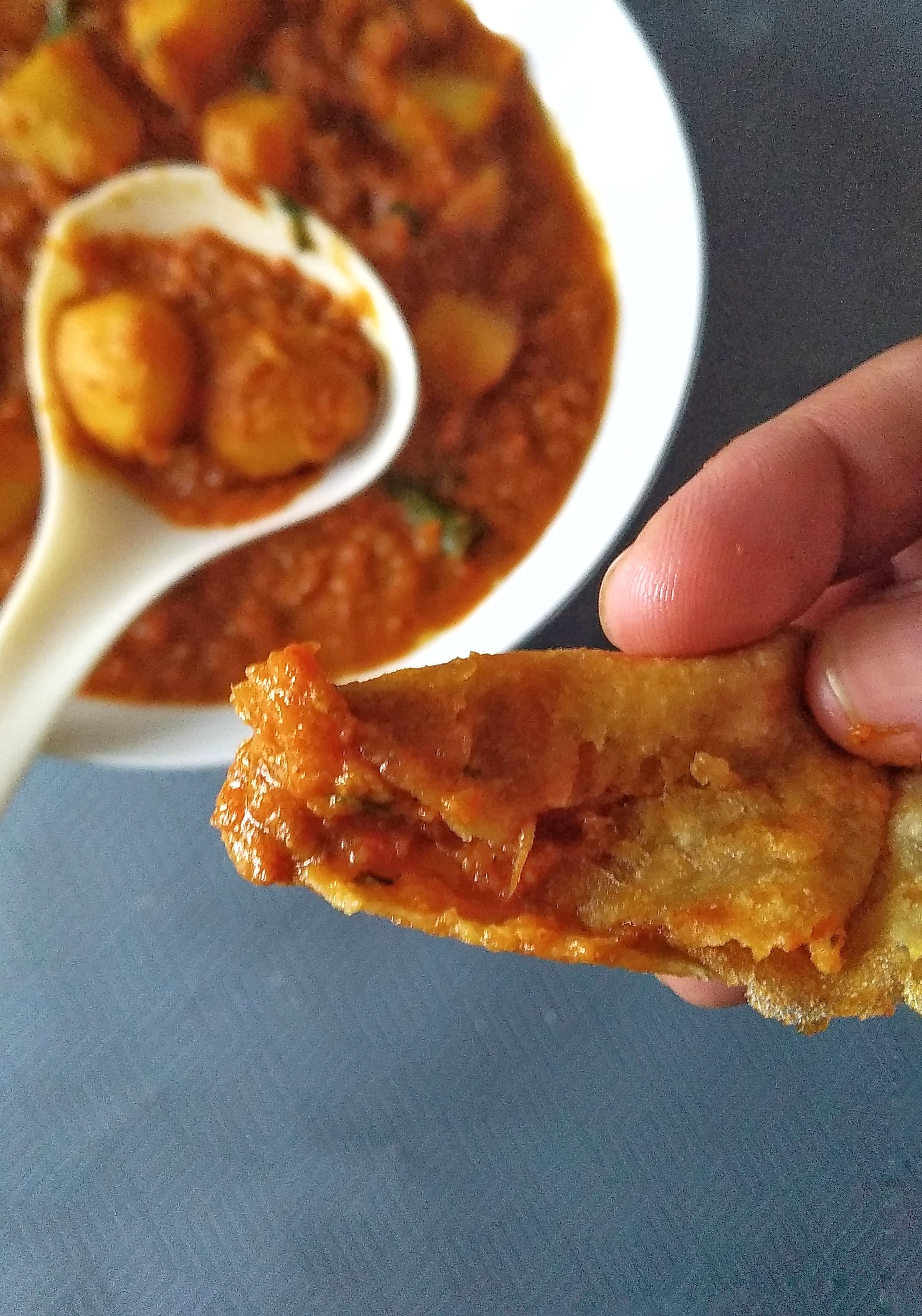
how to make puri | my tips & tricks
- I never rest my poori dough. I find the puri soaks a lot of oil when I soak it. So, I always prepare the dough when I know I will fry them right away
- Always add oil for the dough. Adding oil during the dough stage prevents the dough to be dry. This way, they do not soak up a lot of oil. If your dough is dry, pooris become oily
- Make sure the oil is hot when you fry them. This will puff them up and they do not turn oily
- To get crunchy puri – add 2 tbsp rava or sooji in the dough. Pooris turn crunchy and this kind goes well with any gravy curry like dum aloo
- For soft poori(these are the kind I prefer), do not add rava. Just the wheat flour is good enough
- You can also add some all purpose flour(maida) to the dough for soft poori. Poori turns out soft but they also become slightly oily
- When you roll the dough, it’s thickness should be about 1-1.5mm. Too thin dough will not puff well. They become like papad, crunchy but flat
- If you roll the dough too thick, it will puff but the edges will be too thick when you bite into it
If you follow my tips & tricks, your poori will turn less oily, puffed up and soft. Eat it this way and let me know in comments how it turned out for you!
You can write to me @poojitakrishna@gmail.com and I would love to reply to you all.
Cheers,
PK
Eat right, exercise often!
